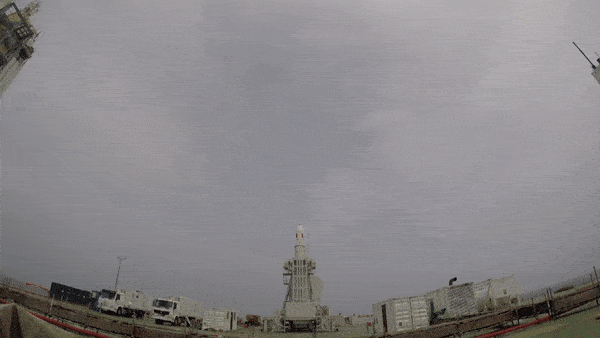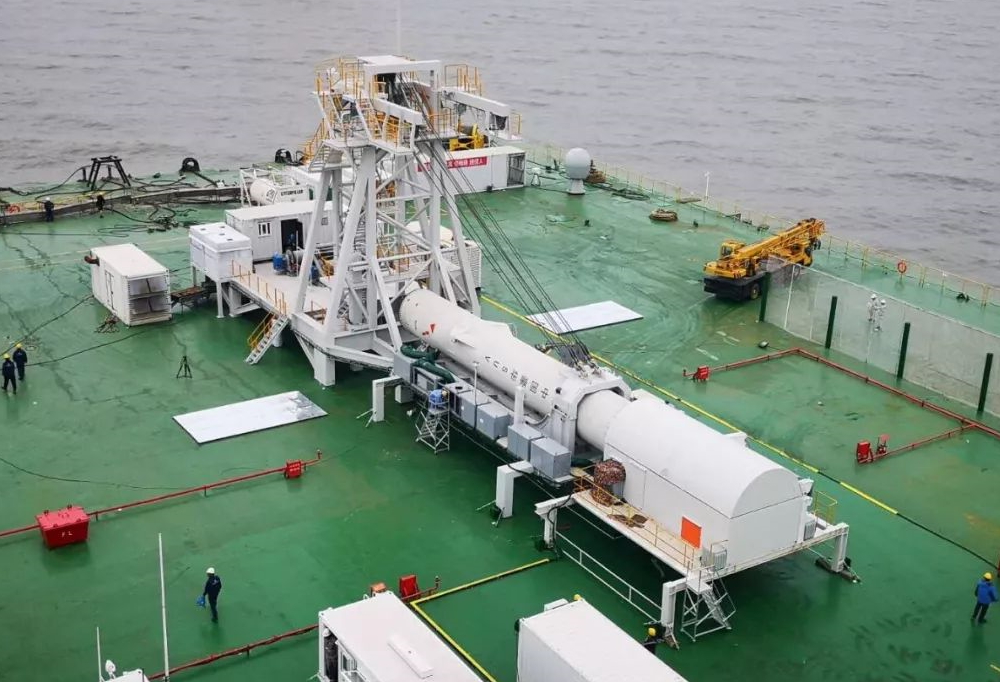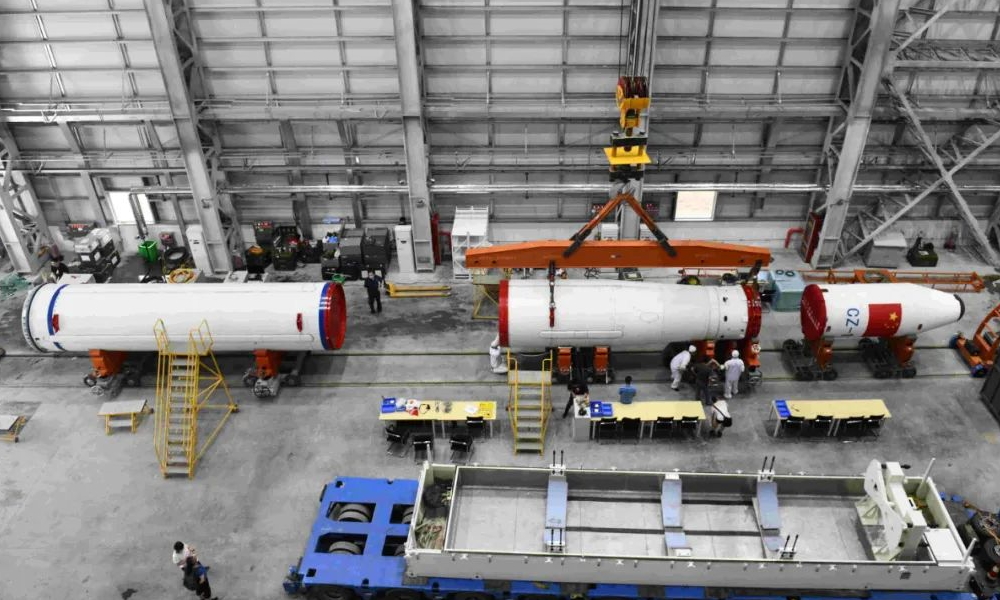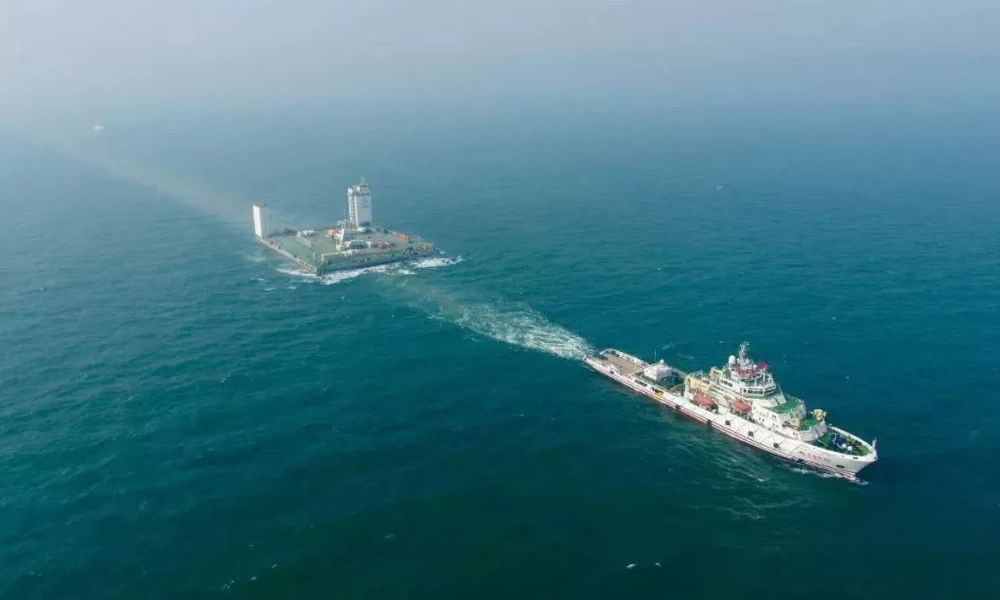
Photo: Xinhua
Rocket
A lot of the Chinese Sea Launch will become clear if we first look at the carrier rocket used. "Long March 11" ("Changzheng-11", CZ-11) is sometimes called China's first solid-propellant launch vehicle, but this is not true - the solid-propellant Quaizhou-1 flew for the first time two years before the first launch of the CZ-11, and at the beginning In the 2000s, two unsuccessful launches of the solid-propellant "Kaitochzhe-1" But in the “Long March” family, it is indeed the first to use solid fuel. Also, the missile is said to be based on the technology of the DF-31 intercontinental ballistic missile, and this most likely contains grains of truth. At least the launch mechanism is typically military - "mortar". The gas generator under the rocket pushes it out of the launch canister, and the rocket engine turns on,when she is already in the air. For example, the launch vehicle "Dnepr", which is, in fact, adapted for launching satellites by the R-36M intercontinental ballistic missile, starts in a similar way.
This is clearly visible in the launch video. Black smoke from the gas generator, the pallet pushing the rocket flies to the right, and then everything is enveloped in white smoke from the main engine of the first stage.

The possible military background seems to have influenced the very high mobility of the rocket - it is assembled and installed in a container, which is then transported by road. In the photo below on the right, you can see that the container consists of two parts - on the right for the rocket, on the left for the payload.

At the ground-based cosmodrome, the installer is also made on a wheelbase.

And on the offshore platform, the launch was made motionless, but it remained very compact.

The design of the launch vehicle allows it to be launched from a wide variety of launch sites. If desired, in addition to stationary land and sea, you can also make mobile on a wheeled chassis. As a matter of fact, "Long March 11" is positioned as a rapid launch rocket, capable of launching within 24 hours.
But, of course, you have to pay for high mobility - the CZ-11 belongs to the light class of launch vehicles and with a launch mass of 58 tons can put about 700 kg into low orbit, and 500 kg into solar-synchronous orbit. Comparable payloads from the existing ones, for example, the Electron launch vehicle - 300 kg for low orbit and 200 kg for solar-synchronous, or Minotaur I - 580 and 331 kg. Structurally, the CZ-11 is a bit like the Minotaur I - it also has four stages.

Assembling the launch vehicle in the assembly and testing complex
Sea launches
Long March 11 was first launched on September 25, 2015, and since then there have been 10 launches, all successful - 7 from Jiuquan Cosmodrome, one from Xichang Cosmodrome and two from offshore platforms.
The first sea launch took place on June 5, 2019. For it, they used the Tai Rui semi-submersible barge (in fact, a floating dock) built in 2013 and the rescue tug Bei Hai Jiu 101. The missile modification was named CZ-11H, most likely from the "haiyang" - "ocean"

The rocket launched from the Yellow Sea (34.90 ° N, 121.19 ° E) and sent seven satellites into low-earth orbit.

The second time from the sea, CZ-11H launched on September 15, 2020 at 01:23 UTC. This time, the launch complex was installed on the ship De Bo 3, which was launched in 2017 for the transport of heavy oversized cargo. The payload was nine Jilin-1 Gaofen-3 Earth remote sensing satellites, which also went into orbit from the Yellow Sea (34.31 ° N, 123.76 ° E).

Conclusion
There is some irony in the fact that Sea Launch and CZ-11H are practically different from each other. Two vessels of the Sea Launch were built according to a special order, for the CZ-11H they simply put the launch pad on the already launched vessels for large-sized cargo. The Zenit-3SL rocket belongs to the middle class of carrying capacity, uses liquid engines and three stages, the CZ-11H is light, solid-propellant and four-stage. Sea Launch used the opportunity to reach the equator to launch a satellite into geostationary orbit with maximum efficiency (the only attempt to launch into a non-geostationary orbit failed), CZ-11H launched spacecraft from the Yellow Sea into low Earth and sun-synchronous orbits, and starting from the sea gave only the advantage of choosing convenient areas for the fall of the spent stages. In fact,China's Sea Launch is a consequence of the high mobility of the Long March 11 launch vehicle, and not a separate distinctive project. But this is not a disadvantage, but, on the contrary, expands the possibilities - tothe limited ranges of available inclinations of the orbit of ground-based spaceports now have the ability to reach the desired point in the ocean and launch a satellite in almost any direction.